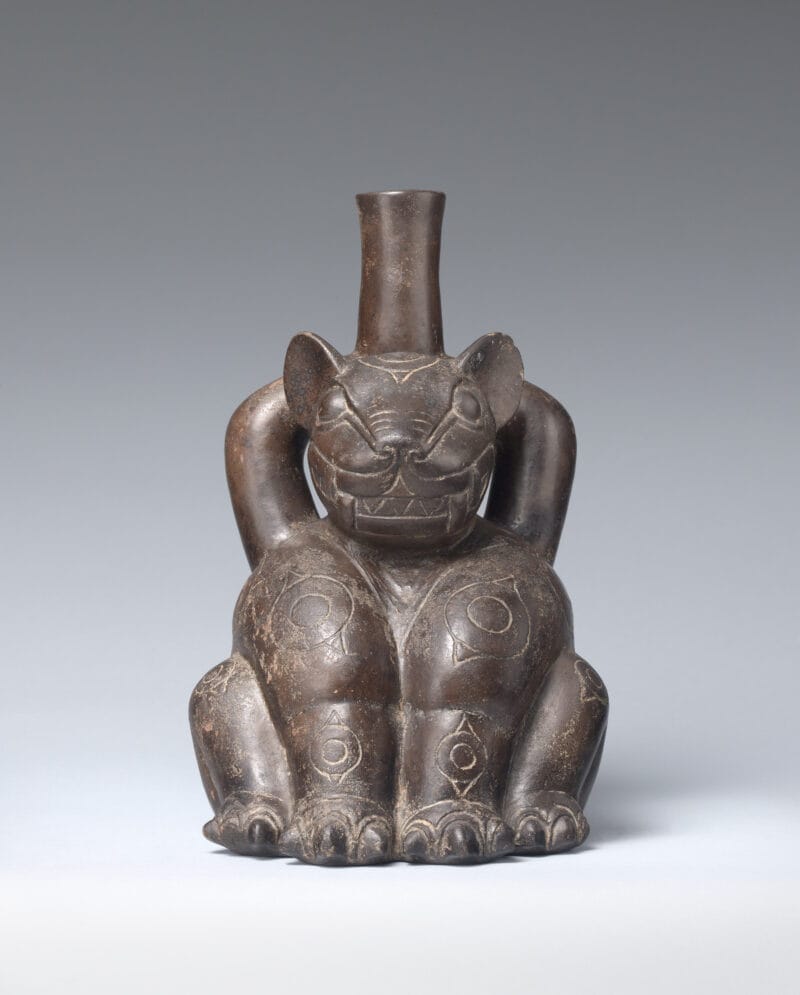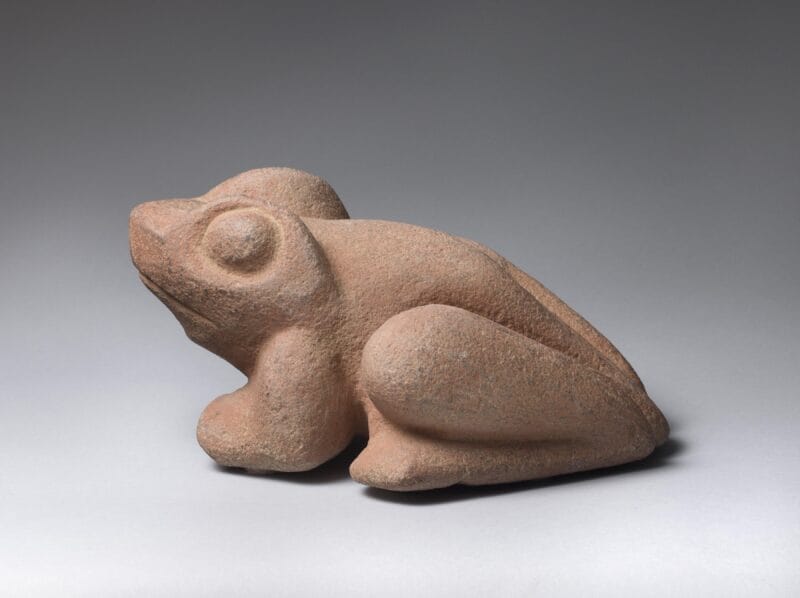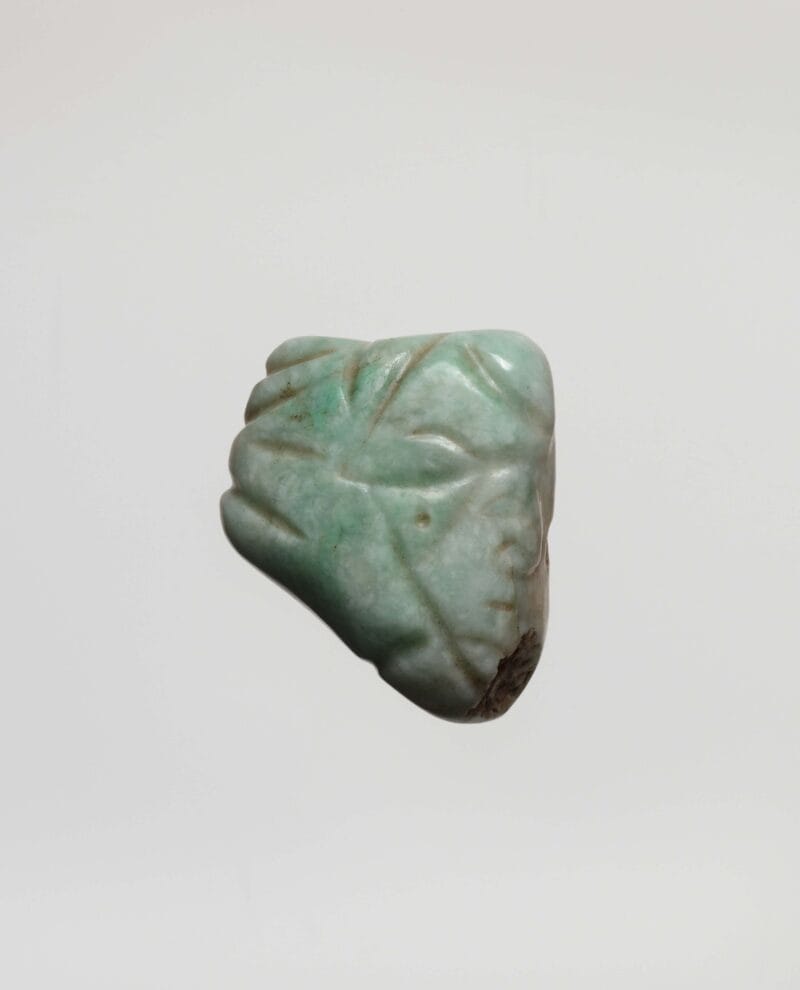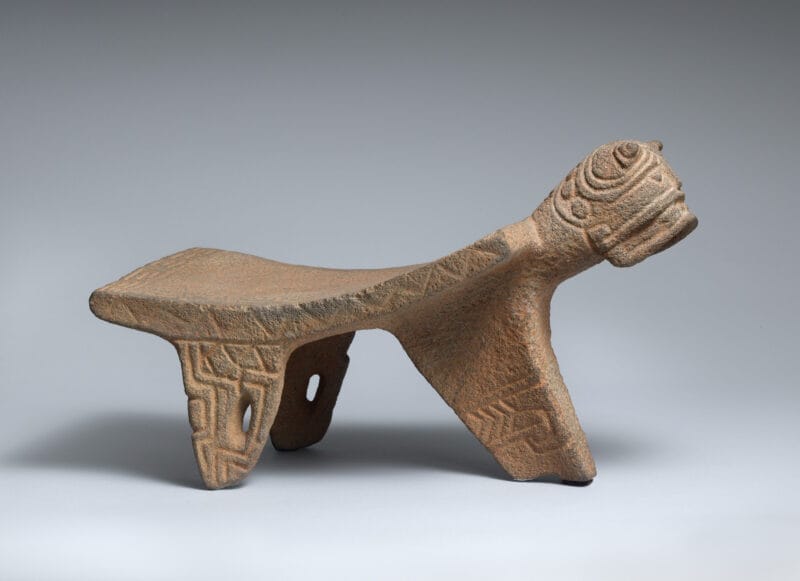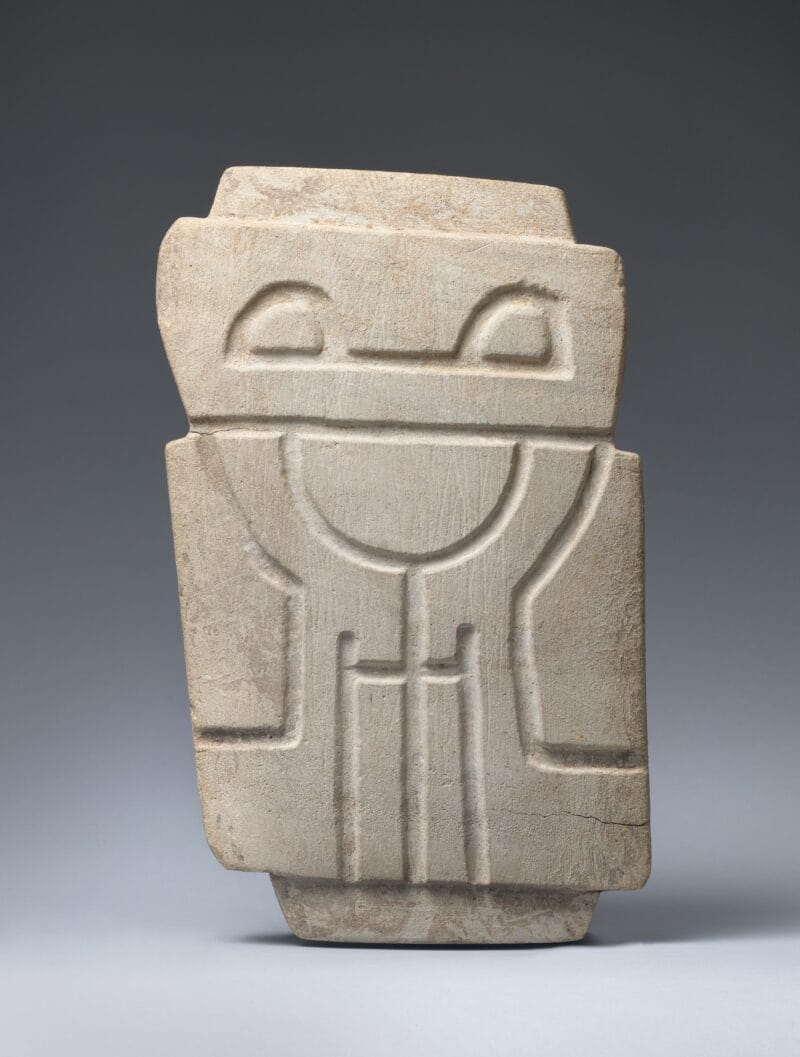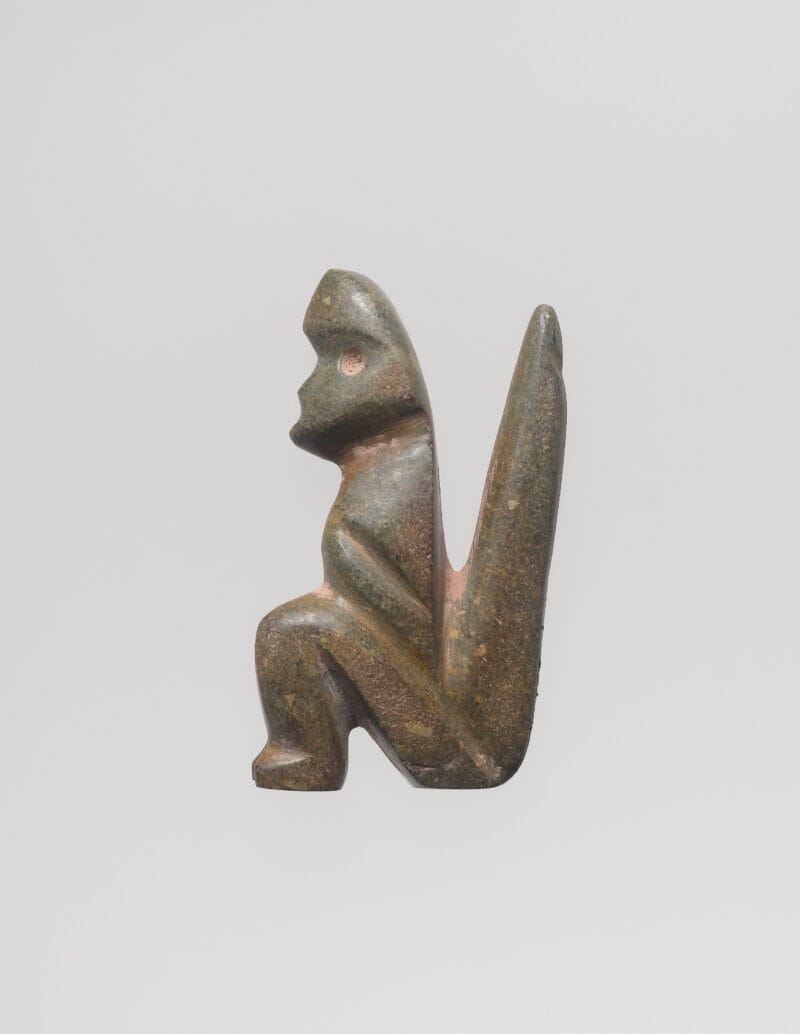
About the Object
In antiquity, this vessel carved from green-gray and brown stone into the shape of a jaguar would be used as a mortar. The spiral tail is particularly intricate and a remarkable accomplishment demonstrating the skills of Valdivia artists in working with stone.
Mortars were used to prepare food and aid in preparation of alcoholic beverages and hallucinogens. These were all consumed in communal rituals, some being geared toward the larger public and others restricted to an elite few who may have had spiritual and sociopolitical power. The culture represented different animals, likely to direct and appreciate how these animals may be utilized and viewed.
Additional Information
From islands in the Pacific to the Amazon basin, the Valdivia built large communal architecture and plazas. They exploited some of the most biologically diverse geography and ecology in the world, producing maize, beans, manioc, chili peppers, and gourds, as well as fishing and hunting. While this culture endured for centuries, some scholars attribute its disappearance to a massive volcanic eruption that disrupted the climate. However, nearly 500 years later, the Chorrera culture arose in the same place with similar material culture, revealing that some traditions endured.
[Throckmorton Fine Art, New York, NY];
